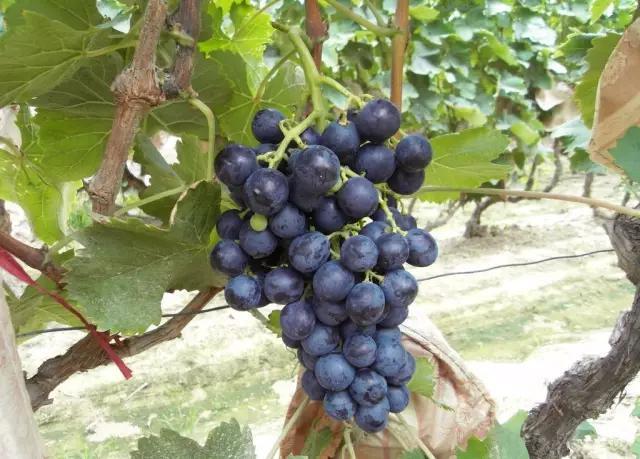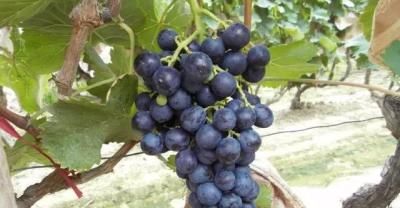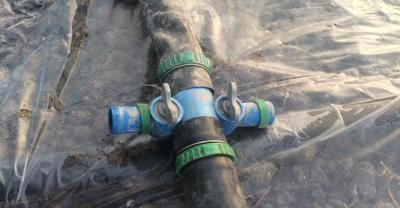Grape planting technology and six misunderstandings are popularized!
Grape is a perennial vine with soft branches. In order to adapt to environmental conditions, grape has formed characteristics of vigorous growth and strong polarity during its long phylogenetic development.

1. The root system of grapes
Grapes have strong roots and strong absorption capacity. Grape roots are fleshy roots that store a lot of nutrients. Before defoliation in autumn and winter, a large amount of starch, protein, tannin, calcium oxalate and other substances begin to accumulate in parenchyma cells, phloem and pith of cortex for winter use.
The annual growth cycle of grape varies with climate, soil and variety. Generally speaking, the optimum temperature for grape growth is about 20℃, and there is a peak period of rooting in spring and summer (April to May) and autumn (September to October) every year, and spring and summer have the most roots.
2. Branches and buds of grapes
Grape branches can be divided into trunk, main vine, fruiting mother branch, fruiting branch, vegetative branch and new shoot due to different parts and properties.
Grape shoots grow very rapidly, can shoot many times a year, the annual growth of new shoots is generally 3-5 meters, sometimes up to 10 meters above, new shoots grow fastest before and after flowering. When the new shoots are fully mature, they have mixed buds and become fruiting mother shoots after defoliation. In spring, new branches sprouting from the bearing mother branch with inflorescences become bearing branches, and new branches without inflorescences become vegetative branches.
The buds on grape branches are axillary buds without terminal buds. In general, two kinds of buds are formed at each node of the new shoots, one kind is called summer bud when it germinates and shoots out in the same year; the other kind is covered with scales and generally does not germinate in the same year, which is called winter bud. The winter bud looks like a bud, but actually contains a main bud and several (3-8) accessory buds of different sizes (preparatory buds), but only 2-3 accessory buds develop greatly. In spring, when the average temperature of the day reaches about 10℃, winter buds begin to germinate. Winter buds generally do not germinate in the same year, but if stimulated by picking and erasing accessory buds, they can also generate secondary buds in the same year. Some varieties such as rose fragrance and giant peak can also form clusters and bear 2-3 fruits.
III. Leaves of grapes
Grape leaves are alternate, usually 3-lobed, 5-lobed, and 3-margin. Young leaves hairy more, old leaves only have the back. Generally speaking, thick leaves, dark color, more hair resistance is stronger. The main function of grape leaves is to provide nutrients for other tissues and organs through photosynthesis for their growth and development.
IV. Inflorescences and flowers of grapes
Grape inflorescences are usually borne on 3-8 nodes of new shoots, with 2 inflorescences per new shoot, 1 and 3 inflorescences, and 4-5 inflorescences per new shoot. Inflorescences are racemes or panicles, like tendrils, formed by stem metamorphosis and, when nourished, can form inflorescences; conversely, tendrils or intermediate types.
The number of fully developed inflorescences varies with the variety, usually 200-1000. Grape has closed flower pollination characteristics, usually before the corolla dehiscence, pollination has been completed, pollen will germinate on the stigma, under suitable conditions, generally 1-2 days can complete the fertilization process. Under normal circumstances, flowering begins when the daily average temperature reaches 20℃, flowering is rare below 15℃, flowering increases rapidly when the temperature rises to 18-21℃, and flowering is inhibited when the temperature reaches 35-38℃.
The length of grape flowering period varies with varieties and climate, short 4-5 days, long up to 2 weeks, usually 6-10 days, 2-3 days after the beginning of flowering into full bloom, 5-6 days after the beginning of physiological flower drop phenomenon.
V. The ears and fruits of grapes
The shape, size and length of the ear are closely related to the shape and size of the inflorescence primordium, and there are certain differences according to different varieties.
The shape of the fruit is spherical, ovoid, cardioid, oblate and elliptical.
After grape fruit setting, berries expand rapidly, and their growth and development generally need to go through the following three stages:
In the first stage, the fruit grows rapidly, the flesh is hard, the acid content increases rapidly, and the respiration rate is fast. This period lasts 5-7 weeks for most grape varieties.
In the second stage, fruit growth stagnates, growth slows significantly, berry acidity reaches its highest level, and sugar begins to accumulate, berry color begins to change, this period generally lasts 2-4 weeks.
The third stage, the final expansion stage of berries, when berries begin to soften, sugar accumulation gradually increases, acidity decreases, showing the inherent color and flavor of the variety. This period lasts 5-8 weeks and the berries can be harvested when they reach physiological maturity.
6 mistakes that are easy to enter into grape cultivation!
Mistake 1: high density, high yield predatory cultivation model, resulting in excessive nutrient consumption of grape trees, poor flower bud differentiation, tree decline. At present, the primary task in grape production in Binchuan is to reduce the planting density, reasonable close planting, adjust the frame, control the yield, so that the grape has a reasonable population structure and load (yield), to achieve the purpose of improving quality and efficiency.
Mistake 2: grape harvest after ignoring downy mildew, powdery mildew and other diseases and insect pests control, leaves easy to fall early, is not conducive to the accumulation of autumn and winter nutrition. Therefore, in rainy season and after fruit picking, it is necessary to strengthen the standardized control of grape diseases and insect pests, prevent early leaf fall and shoot sprouting in autumn and winter, and promote the accumulation of grape nutrients.
Mistake 3: partial application of chemical fertilizer, less or no application of organic fertilizer, secondary salinization, acidification aggravation, soil hardening, poor root growth and development, is not conducive to grape quality production year after year. In order to make Binchuan grape take the road of sustainable development, it is necessary to increase the application of organic fertilizer such as stable manure year by year, gradually reduce the amount of chemical fertilizer, and plant green manure or other short stem plants between grape rows to reduce soil salt damage and acidification, increase soil organic matter content, promote the transformation and decomposition of soil nutrients, improve soil physical properties, improve grape root vitality, and cultivate healthy trees.
Mistake 4: blind early, regardless of grape growth and development rules and seasons, early break sleep to promote germination, if encountered low temperature cold damage, grape growth and development blocked. According to the climatic characteristics of Binchuan, it is suggested that grape pruning should be carried out from the end of December to the end of January, and the germination should be promoted in the middle of January to promote the synchronous growth of the aboveground and underground parts of grape.
Mistake 5: Superstition of plant growth regulators, resulting in an imbalance of endogenous hormones in grapes, premature aging of trees. Therefore, it is necessary to use plant growth regulators scientifically and reasonably, and to break the dormancy and expand the fruit of grapes in a timely and appropriate amount to prevent premature aging of trees.
Misunderstanding 6: Grape planting does not pay attention to soil improvement, fertility. Should be planted in grape before, combined with deep soil tillage, application of organic fertilizer, micro-fertilizer and other base fertilizer, to create the soil growth environment required for grape roots.
Creative agriculture leader team is committed to agriculture, rural areas and farmers (supported by strong agricultural technology team of Beijing City Academy of Agriculture and Forestry Sciences), providing better considerate services for facility agriculture (park planning, greenhouse construction, agricultural intelligence, information Internet of Things). For more information, please add WeChat platform: linghang1128
- Prev

A brief introduction to the planting method of balsam pear is very simple.
The first time I ate balsam pear was when I was in college, when my classmates went to dinner together, a female monitor ordered a plate of fried balsam pear, which seemed not cheap. Everybody.
- Next

Buttercup potted plants teach you to grow like this!
Buttercup has a beautiful flower posture and has been planted in many areas at home and abroad. Especially in European countries, not only a large amount of planting, but also used for research and training.
Related
- Fuxing push coffee new agricultural production and marketing class: lack of small-scale processing plants
- Jujube rice field leisure farm deep ploughing Yilan for five years to create a space for organic food and play
- Nongyu Farm-A trial of organic papaya for brave women with advanced technology
- Four points for attention in the prevention and control of diseases and insect pests of edible fungi
- How to add nutrient solution to Edible Fungi
- Is there any good way to control edible fungus mites?
- Open Inoculation Technology of Edible Fungi
- Is there any clever way to use fertilizer for edible fungus in winter?
- What agents are used to kill the pathogens of edible fungi in the mushroom shed?
- Rapid drying of Edible Fungi

